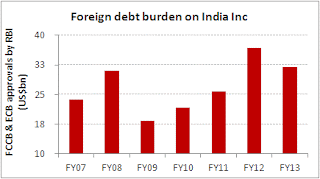Dollar remains mixed in early US session, maintaining gains against European majors, staying soft against commodity currencies and flat against yen.
Initial jobless claims dropped slightly to 346k in the week ended June 22, slightly below expectation of 348k.
Personal income rose more than expected by 0.5% in May while spending rose 0.3%. Headline PCE rose less than expected by 1.0% yoy while core PCE rose 1.1% yoy, inline with consensus.
US futures point to higher opening and stocks would likely extend yesterday's rebound. Focus remains on whether Fed would really start tapering the asset purchase this year, and more important, in what speed.
Euro remained soft as weighed down by ECB president Draghi's repeated dovish comments on growth and the pledged to keep monetary policy accommodative.
EU finance ministers have agreed on the guidelines for assigning losses to private creditors on handling failing banks. German finance minister Schaeuble said that's an "important step" to make clear that "shareholders and creditors are liable first and foremost."
Italy sold maximum target in EUR 5b of 3.5% June 2018 and 4.5% May 2023 dated bonds today.
Yield on the 2018 BTP rose to 3.47%, up from prior auctions's 3.01%. Yield on the 2023 BTP rose to 4.55%, up from 4.14% in prior auction. The auction was viewed as solid by the markets with well supported demand.
Data from Eurozone saw M3 growth slowed to 2.9% yoy in May.
Economic confidence improved to 91.3 in June, industrial confidence improved to -11.2, consumer confidence unchanged at -18.8, services confidence dropped to -9.5.
Germany, unemployment unexpectedly dropped -12k in June while unemployment rate also dropped 6.8%. Import price dropped -0.4% mom in May.
UK Q1 GDP was finalized at 0.3% qoq, unrevised.







